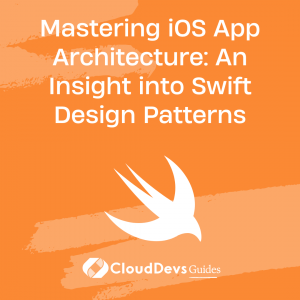Mastering iOS App Architecture: An Insight into Swift Design Patterns
In the world of software development, the architecture of an application can often determine its success. It’s crucial to consider factors such as maintainability, scalability, and testability while designing the architecture. An effective tool to ensure robust application architecture is the use of design patterns. This is why hiring Swift iOS developers who are adept in using these design patterns is so crucial.
In iOS app development, leveraging the Swift programming language with suitable design patterns helps in creating a seamless and efficient app. Notably, skilled Swift iOS developers will be proficient in this.
In this blog post, we will delve into several popular design patterns best suited for iOS app architecture using Swift. Whether you’re a developer wanting to expand your knowledge, or you’re looking to hire Swift iOS developers for your next project, understanding these design patterns will serve as a valuable resource.
What Are Design Patterns?
Design patterns are predefined solutions to common development problems that guide software design. They are templates or blueprints that allow for efficient problem-solving in the realm of software engineering. Implementing design patterns can improve code readability, reusability, and maintainability, all while reducing potential bugs and future issues.
Model-View-Controller (MVC)
The Model-View-Controller (MVC) is a fundamental pattern in iOS development. It’s built into UIKit and other frameworks, making it the default choice for iOS app architecture.
– The Model component deals with the data and business logic.
– The View is responsible for the user interface and presenting data to the user.
– The Controller connects the Model and the View, processing user actions and updating the Model and View accordingly.
MVC is great for simple to moderately complex applications, and it’s quick to implement due to the deep integration within the system. However, it can lead to bloated controllers if not implemented with care.
Model-View-ViewModel (MVVM)
Model-View-ViewModel (MVVM) is an alternative to MVC that can reduce code complexity. It works well with data-binding systems.
– The Model is the data and business logic.
– The View is the user interface.
– The ViewModel acts as an interface between the Model and the View. It converts the data from the Model into a form that can be easily managed and presented by the View.
By handling the presentation logic, the ViewModel keeps the View simple and focused on the user interface, leading to a clear separation of concerns. However, without a binding mechanism, there can be considerable boilerplate code to keep the View and ViewModel synchronized.
Model-View-Presenter (MVP)
Model-View-Presenter (MVP) is a derivative of MVC, which aims to create a better separation of concerns by introducing a Presenter.
– The Model manages the data and business logic.
– The View manages the user interface.
– The Presenter handles all updates to the Model and reflects the changes in the View.
In MVP, the View is passive and relies on the Presenter to update it. This pattern simplifies testing and improves maintainability, but the downside is increased complexity due to additional communication interfaces.
Singleton
Singleton is a creational design pattern that ensures a class has only one instance, providing a global access point to this instance. It’s used for resources that need to be shared across the app, such as user preferences, network sessions, or database access.
While Singleton is powerful, it should be used sparingly as it can lead to tight coupling and challenges in testing due to shared state across the application.
Observer
The Observer pattern, implemented via protocols and delegates or notifications in Swift, allows an object to notify other objects about changes in its state. It’s great for creating a loosely coupled architecture as it keeps the objects independent of each other. SwiftUI uses a variant of this pattern through the @Published and @ObservedObject property wrappers for state management.
Factory
The Factory pattern is a creational design pattern that provides an interface for creating objects in a superclass
but allows subclasses to alter the type of objects created. In Swift, this can be implemented with a protocol and multiple conforming types, which makes code more flexible and reusable.
Conclusion
To sum it up, iOS app architecture can substantially benefit from the use of design patterns. They not only assist in managing code complexity but also make your app scalable and maintainable. Choosing the right pattern depends on the specific use case, complexity, and size of your application.
Remember, while design patterns offer solutions, they are not silver bullets. Every pattern has its pros and cons, and the wrong choice can lead to more problems than it solves. This is why when you’re looking to hire Swift iOS developers, it’s vital to consider the needs of your app and the ability of the team to appropriately utilize these patterns.
As a Swift developer, understanding and applying these design patterns will empower you to write more structured, readable, and reusable code. This not only improves your effectiveness and efficiency as a developer but also increases your marketability for those looking to hire Swift iOS developers. With these skills, you’ll be in a great position to tackle any iOS development project. Happy coding!
Table of Contents









